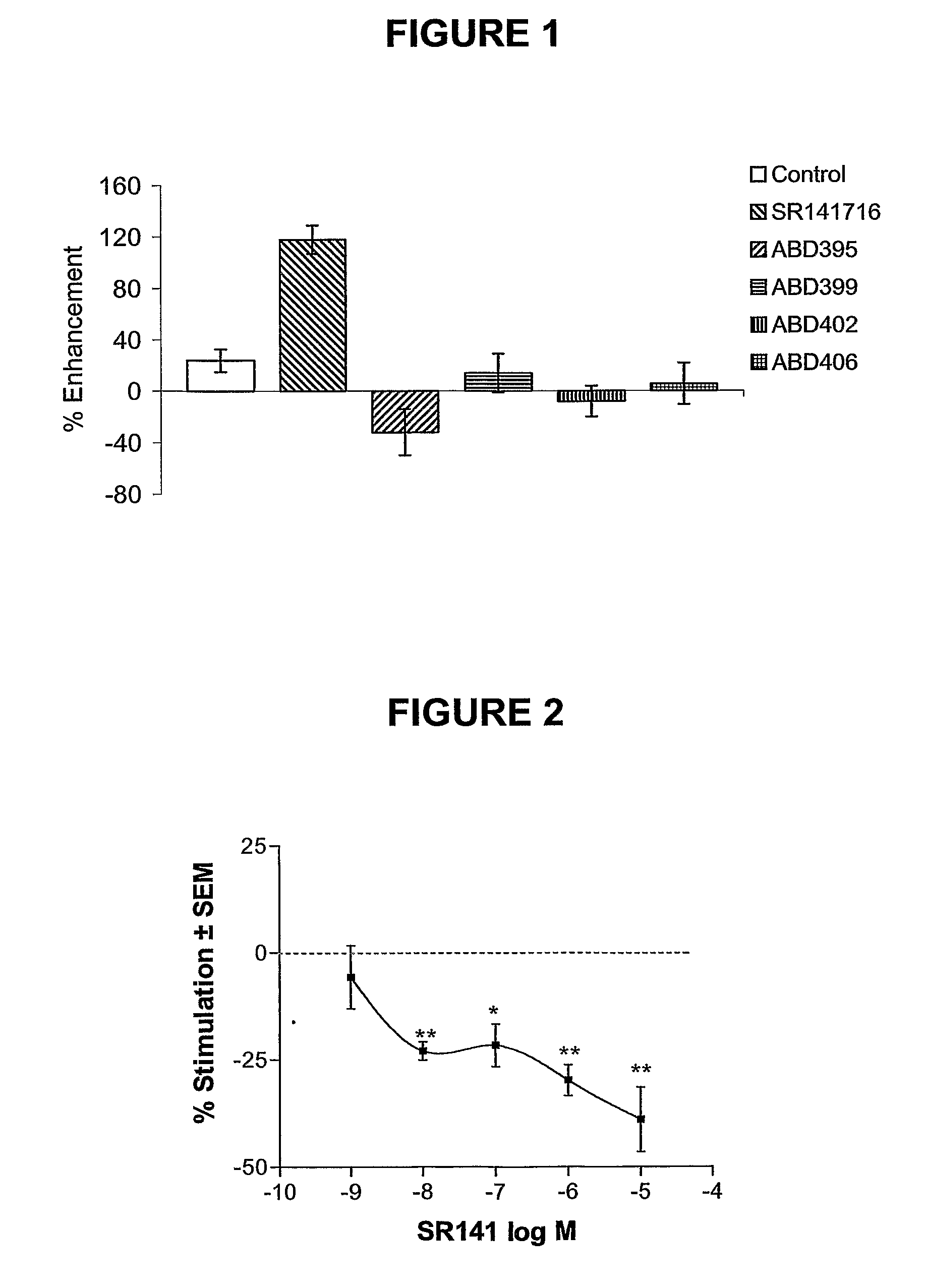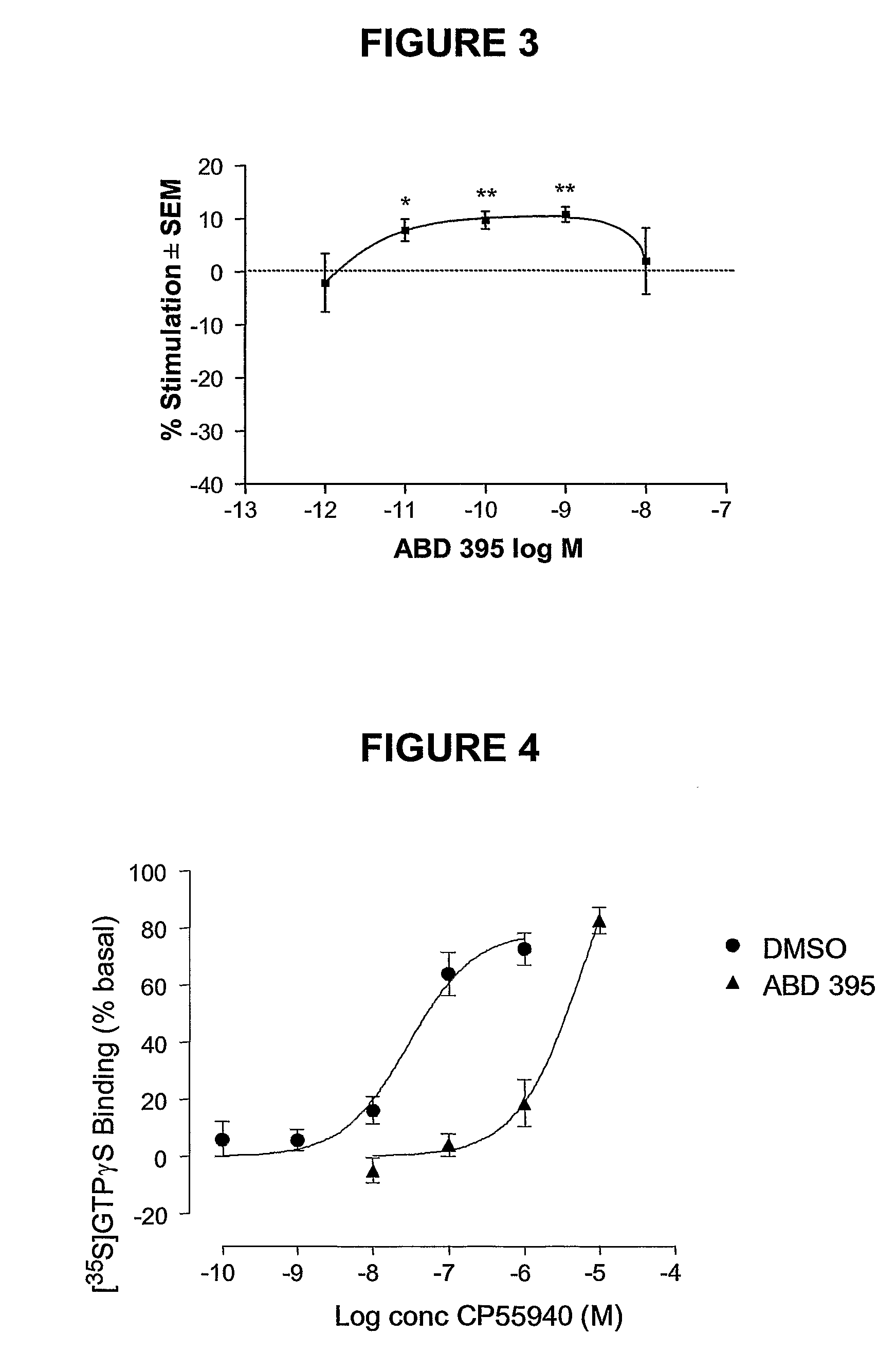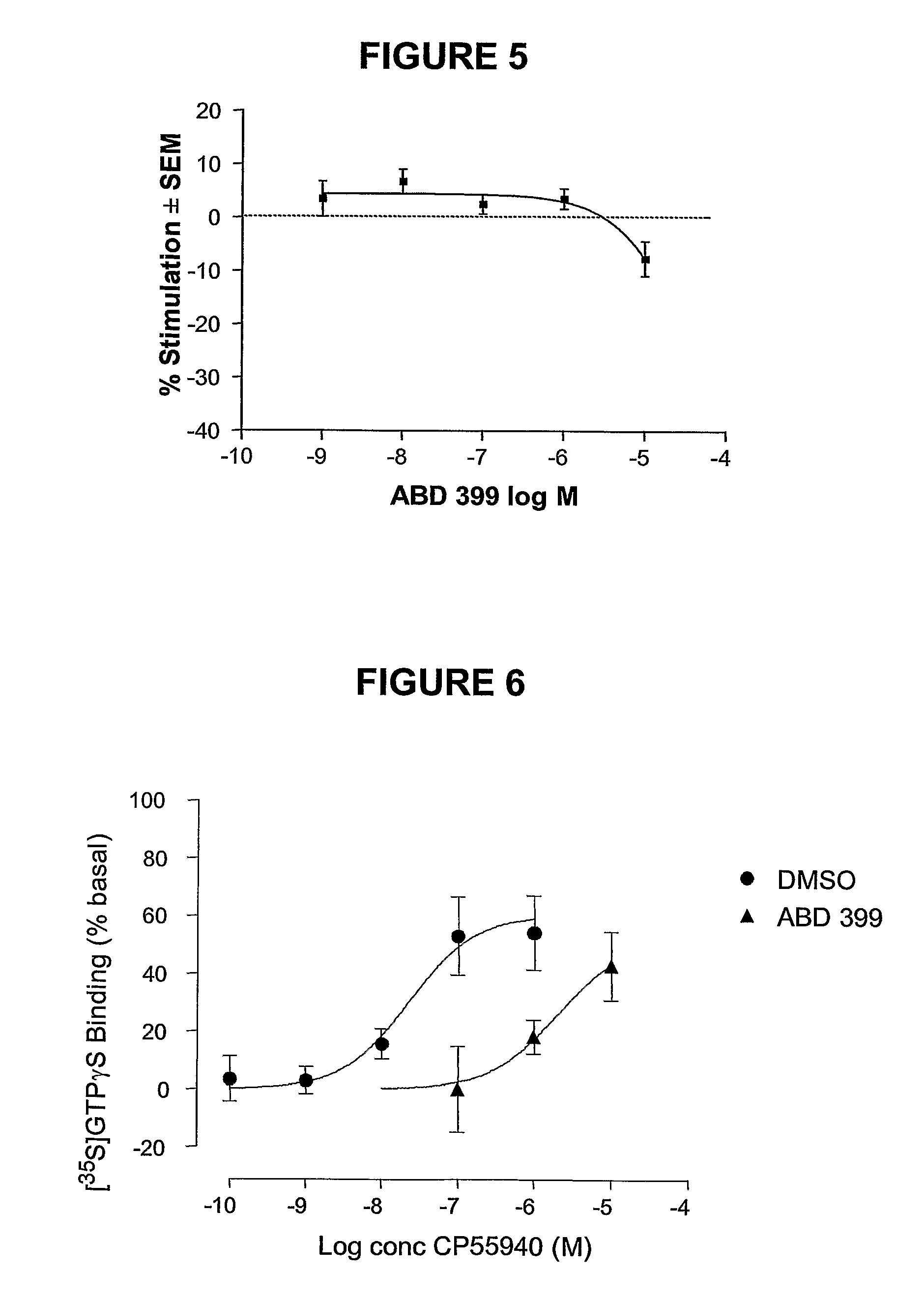1,5-Diaryl-Pyrazoles As Cannabinoid Receptor Neutral Antagonists Useful As Therapeutic Agents
- Summary
- Abstract
- Description
- Claims
- Application Information
AI Technical Summary
Benefits of technology
Problems solved by technology
Method used
Image
Examples
examples
[0471]The following examples are provided solely to illustrate the present invention and are not intended to limit the scope of the invention, as described herein.
Synthesis 1
5-(4-Chlorophenyl)-1-(2,4-dichlorophenyl)-4-methylpyrazole-3-carboxylic acid methoxy methyl-amide (ABD393)
[0472]
[0473]5-(4-Chlorophenyl)-1-(2,4-dichlorophenyl)-4-methylpyrazole-3-carboxylic acid chloride (1.2 g) prepared by the methods described by Barth et al. (EP 0656354 A1) and N,O-dimethyl hydroxylamine (0.4 g) were dissolved in dichloromethane (20 mL) and chilled in an ice bath. Pyridine (1 mL) was added dropwise and the mixture was stirred for 3 hours. The mixture was poured into water and the organic phase was separated, washed with water and brine, and dried. Evaporation gave an oil, which was purified by column chromatography (petrol / ethyl acetate) to give the title compound as a clear oil.
[0474]δH (CDCl3, 250 MHz): 2.21 (3H, s), 3.44 (3H, s), 3.80 (3H, s), 7.05 (2H, d, J= 8.24 Hz), 7....
PUM
| Property | Measurement | Unit |
|---|---|---|
| Covalent bond | aaaaa | aaaaa |
Abstract
Description
Claims
Application Information
 Login to View More
Login to View More - R&D
- Intellectual Property
- Life Sciences
- Materials
- Tech Scout
- Unparalleled Data Quality
- Higher Quality Content
- 60% Fewer Hallucinations
Browse by: Latest US Patents, China's latest patents, Technical Efficacy Thesaurus, Application Domain, Technology Topic, Popular Technical Reports.
© 2025 PatSnap. All rights reserved.Legal|Privacy policy|Modern Slavery Act Transparency Statement|Sitemap|About US| Contact US: help@patsnap.com



